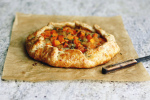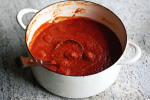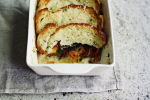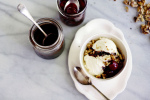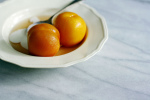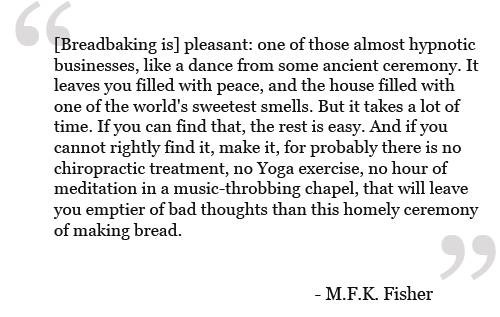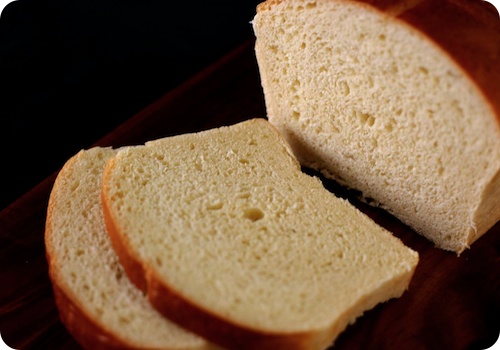
Important note: My sincere apologies; when this was first posted, there was an error in the quantity of milk used - it should be 2 cups. If anyone did make the recipe with the incorrect amount of liquid, I hope you did not fret too much; bake the oatmeal for an additional 15 or so minutes. The bottom oats will be a bit softer, but some of the excess liquid will have absorbed. Serves me right for attempting to write while my head was shrouded in cold symptoms!
I am feeling more than a tad under the weather. I know that a lot of people, including my dear husband, are in the same circumstance just now, but even company is not making this misery go away any faster.
The company is appreciated though, as Sean and I are spending our time comparing analogies to our symptoms. At last count he was mired in a rather fog-shrouded bog, whilst I was enjoying the company of particularly-prodigious pachyderms as they perched upon my head.
I am not so sick as to require reinforcements to help me wrangle the boys or make it through my day, but I am sick enough that said wrangling sometimes sets my mind aswirl and by the end of the day I am reaching for the coziest of sweaters and the softest of pillows. I am not so sick that I did not get dressed today, but I am sick enough that when I noticed my socks did not exactly match, I shrugged my shoulders and pulled them on anyway.
I had meant to write about bread baking and chocolate cakes and other such interesting things. But to be honest, I am not in the mood for food just now. I have little appetite, and when I do eat, that's not the food I am wanting - I want warmth, and I want it in a bowl.
Wandering about the kitchen this morning, I set about making a pot of steel cut oats; hearty and filling, a regular winter breakfast for us. I took pause however, and thought of baked oatmeal instead. This is the goose down duvet of breakfasts; stewed fruit is tucked beneath a layer of soft, pillowy oats, with a thin, crisp crust atop. My banana and blueberry version is like eating banana bread combined with a fruit crumble, with the best qualities of a breakfast bar and oatmeal cookie thrown in for good measure.
The potent mix of spice and fruit filled the kitchen with a soothing fug that brought appetites to the table. Textured and toothsome, the oatmeal was greedily spooned out and gobbled up, warming both our hearts and bellies. It was just what the doctor ordered.
Be well.
Endnote: If anyone might happen to find me, still in my robe (and possibly mismatched socks) eating this cold out of the fridge (and directly from the dish), please don't judge.

Baked oatmeal with blueberries and banana
Perfect for a cold morning, this baked oatmeal can be served as is or, as I like it, with a splash of extra milk or a dollop of yogurt.
Ingredients
Softened butter for greasing the pan
2 cups large flake rolled oats (not instant)
1/2 cup sliced almonds, lightly toasted
1/3 cup brown sugar, packed
1/4 cup pepitas, lightly toasted
2 teaspoons flax seeds
1 teaspoon baking powder
3/4 teaspoon ground cinnamon
1/4 teaspoon ground ginger
1/8 teaspoon ground nutmeg
1/8 teaspoon ground clove
1/8 teaspoon kosher salt
2 cups milk (I use 1%)
1 large egg
2 tablespoons unsalted butter, melted
1 teaspoon vanilla
1 teaspoon pure maple syrup
2 medium bananas, diced
1/2 cup frozen blueberries (not thawed)
Coarse sugar, optional
Preheat oven to 375°F (190°C). Lightly grease the inside of a 8" round baking dish (around 2 quart capacity) and set aside.
In a medium bowl, mix together the oats, almonds, brown sugar, pepitas, flax seeds, baking powder, spices and salt. Set aside.
In another bowl, whisk together the milk, egg, almost all of the butter (save about 1 teaspoon for drizzling over the finished dish), vanilla and maple syrup. Set aside.
In the prepared baking dish, spread the diced bananas in an even layer, then scatter the blueberries over top. Pile the oat mixture to cover the fruit, but do not pack too tightly. Carefully pour the wet milk mixture over the oats; it will look as if there is too much liquid, but not to worry, it will be absorbed during baking.
Drizzle over the reserved butter, sprinkle with a scant teaspoon of coarse sugar (or to taste), and bake for 35-40 minutes, until the oatmeal is puffed and set, with a golden brown top.
Remove from the oven, allow to cool for a few minutes, then enjoy.
Makes about 4 hearty servings.
Notes:
• Although I have given measurements, the fruit simply needs to completely cover the base of the baking dish. You might need to adjust your quantities to suit your baking dish. Speaking of which, an 8x8 inch square baking dish can be used in place of the round; the oatmeal will be crisper, though.
• This is one of those recipes that allows for a host of variations; I simply pillaged my pantry for ingredients and went from there. Almost any nuts and an array of fresh and dried fruit would all work here. Some specifically-tasty combinations: grated apple with almonds, bananas, dried cranberries and pecans, blackberries and peaches with almonds, dried figs with pistachios, or diced pears with walnuts. In each case, spices should also be adapted accordingly.
Menu for Hope V update: Marty McCarthy, winner of CA06: The flavours of Canada, please email me at tara[at]sevenspoons[dot]net with your contact information.
 Thursday, January 29, 2009 at 3:17PM
Thursday, January 29, 2009 at 3:17PM 


